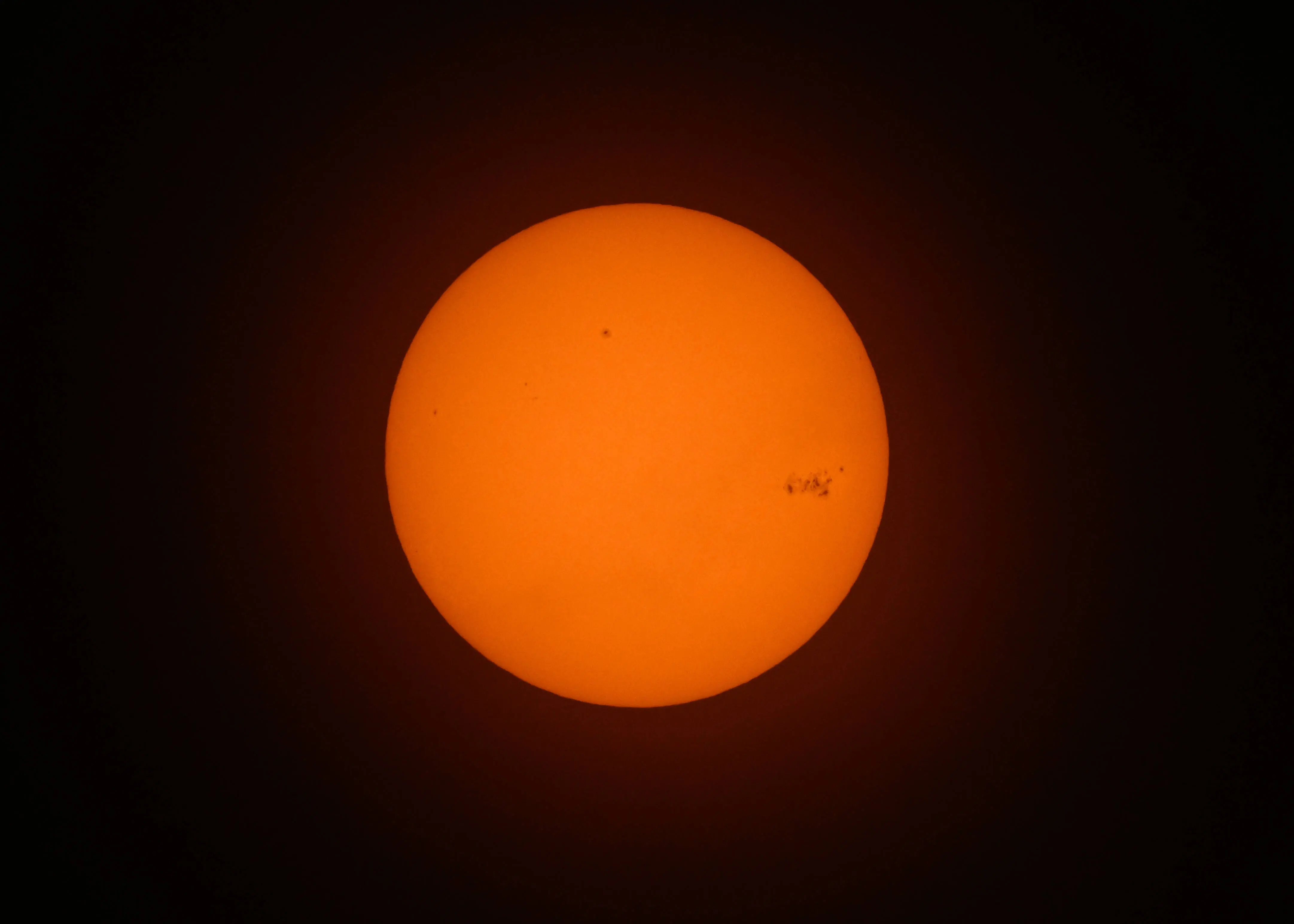Sunspot activity rises today as new regions emerge on the Sun
-
 A view of an unusual sun activity created a sunspot, that is responsible for a G4 Geostorm on Earth (Image via Getty)
A view of an unusual sun activity created a sunspot, that is responsible for a G4 Geostorm on Earth (Image via Getty)On November 1, 2025, sunspot activity on the Sun has increased as new regions rotate into view, according to EarthSky. Currently, only one numbered sunspot region, AR4267, is visible on the Earth-facing disk.
This region is small and magnetically simple, classified as an alpha group. Additional active regions are emerging over the Sun’s northeast limb, showing magnetic loops in the solar corona.
Until today, these regions have been tracked through helioseismology, which studies sound waves inside the Sun.
Direct observation of their magnetic fields breaking the surface is now possible as they rotate into the viewable hemisphere.
Emerging sunspot regions increase solar activity today
Current sunspot and flare activity
As of the morning of November 1, flare activity on the near side of the Sun remained low but increased slightly. Seven C-class flares were recorded, all from small or unnumbered regions on the northeast limb and from AR4271.
The strongest recorded flare was a C7.1 event at 20:43 UTC from an unnumbered incoming region. Other recorded flares included a C1.4 at 12:01 UTC, a C3.7 at 16:53 UTC from the same sector, and a C2.4 at 23:26 UTC from AR4271.
No M-class or X-class flares were observed. The single Earth-facing sunspot, AR4267, remained stable with no significant flare production reported.
Three previously numbered regions decayed into plage, leaving only AR4267 as the visible sunspot on the Earth-facing disk.
Coronal mass ejections and far-side activity
Several coronal mass ejections (CMEs) were detected in coronagraph imagery originating on the far side of the Sun. Initial analysis indicates that these CMEs are not directed toward Earth.
Two larger CMEs, one at 06:45 UTC on October 30 and another at 01:23 UTC on October 31, emerged from the northeast and are currently under modeling for possible glancing components.
Far-side activity continues with multiple filament eruptions, including the previously tracked regions AR4246 and AR4248, which contributed to recent CMEs.
Filament-channel activity in the northwest also produced eruptions that could have minor effects if any portion reaches Earth.
Solar wind and geomagnetic conditions
Solar wind speeds decreased from approximately 680 kilometers per second to 531 kilometers per second by 09:00 UTC on November 1.
Magnetic field strength was measured at about 5.7 nanotesla, and the Bz component alternated between northward and southward orientations, with stronger southward intervals favoring auroras.
Geomagnetic activity on Earth declined from unsettled to quiet, with Kp values around 2. A large coronal hole continues to produce high-speed streams, influencing Earth’s magnetic environment.
A low-impact glancing disturbance from a CME launched on October 29 is possible, with continued quiet to active conditions expected through November 3.
Minor geomagnetic storms (G1) and a slight chance of moderate storms (G2) may occur if any glancing CME components intersect Earth’s magnetosphere.
Forecast and outlook
Flare activity is forecasted to remain low to moderate. The active area emerging over the northeast limb increases the probability of M-class flares from 5 percent to approximately 25 percent and X-class flares to roughly 5 percent.
Geomagnetic activity may remain unsettled while high-speed streams from coronal holes continue. Monitoring will continue as additional sunspot regions rotate into the Earth-facing disk.
Observations from NASA’s Solar Dynamics Observatory and JHelioviewer provide current imaging of these emerging active regions.
Solar wind conditions are expected to fluctuate slightly as these regions influence the Sun–Earth environment.
Stay tuned for more updates.
TOPICS: Sunspot activity today, Coronal mass ejections (CMEs), Geomagnetic storms November 2025, NASA solar observation, New sunspot regions November 2025, Solar flares November 2025, Solar wind conditions, Sun Earth space weather